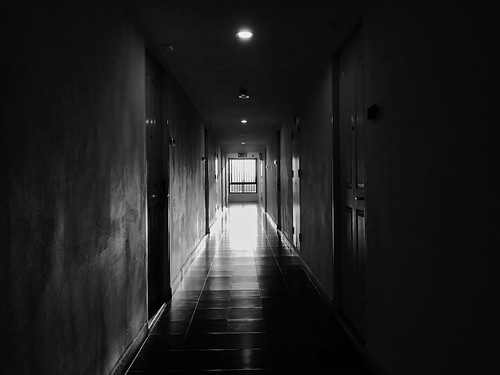The findings of toxin A488+ve CD19-positive/IgD-damaging and CD19-optimistic/IgD-constructive cells are consistent with the existence of switched (IgD-unfavorable) and unswitched (IgDpositive), toxin A-certain memory B cells. They also mirror heterogeneity in the era of memory B mobile populations [30]. Even so, the practical contributions of these distinct subpopulations of cells in host safety remains to be established. More thorough phenotypic studies aimed at characterising human memory B mobile subsets in patients with C. difficile an infection may assist determine B cell signatures connected with disease severity, prognosis and reaction to remedy. In conclusion, our studies supply additional evidence for the value of the humoral immune reaction to harmful toxins A and B in safety against C. difficile an infection. The impaired capability to make strong and sustained toxin-particular humoral immune responses, by means of lengthy-lived plasma cells and long-lived memory B cells, may boost susceptibility of older people to C. difficile infection and warrants more investigation of the part of immune senescence. Total, our information advise that serum anti-toxin antibodies may possibly undervalue the breadth of humoral immunity in relation to C. difficile infection and strongly support the use of toxinspecific B memory cell analyses to enhance serological reports. The antigen-specific movement cytometric and ELISpot techniques explained in this report could find utility in the improvement of an powerful novel vaccine against C. difficile infection that induces prolonged-lived safety.
Toxin-certain antibody and memory B mobile responses in non-IBD and IBD sufferers. Scenario research (A) displaying toxin A- and toxin B-particular serum antibody levels and memory ASC frequencies in non-IBD CDAD and IBD-CDAD individuals. (A) 67 yr Cyanoginosin-LR feminine, 1st sample 5d right after onset of diarrhoea connected with 1st episode of C. difficile an infection. Recurrence of infection following 26d (dashed arrow) with no further episodes in excess of 21mths. (B) sixty two yr feminine, 1st sample 7d soon after 2nd episode of C. difficile infection (sound arrow). No recurrences in excess of 14mths. (C) 71 yr feminine, 1st sample 12d right after onset of diarrhoea related with 1st episode  of severe C. difficile an infection (solid arrow). Second episode of an infection (dashed arrow) following 94d but no more episodes more than subsequent21190859 15mths. (D) 62 yr woman, 1st sample 7d following onset of diarrhoea connected with 1st episode of extreme C. difficile an infection (reliable arrow). Recurrence at 30d (dashed arrow). No additional episodes of an infection over subsequent 13mths. (E) 32 yr pregnant woman, recent prognosis of ulcerative colitis. Healthcare facility admission for intravenous corticosteroids 17d prior to 1st sample. Two initial stool samples adverse for C. difficile toxin. Four times just before first blood sample, positive stool C. difficile toxin examination (solid arrow). (F) 28 yr female with ulcerative colitis and recurrent C. difficile infection. First sample for the duration of third episode of C. difficile an infection (1st episode happened 60d previously strong arrow). Fourth episode of C. difficile an infection (dashed arrow) at 135d. In intervening period of time, affected person was getting corticosteroids, ciclosporin and azathioprine.
of severe C. difficile an infection (solid arrow). Second episode of an infection (dashed arrow) following 94d but no more episodes more than subsequent21190859 15mths. (D) 62 yr woman, 1st sample 7d following onset of diarrhoea connected with 1st episode of extreme C. difficile an infection (reliable arrow). Recurrence at 30d (dashed arrow). No additional episodes of an infection over subsequent 13mths. (E) 32 yr pregnant woman, recent prognosis of ulcerative colitis. Healthcare facility admission for intravenous corticosteroids 17d prior to 1st sample. Two initial stool samples adverse for C. difficile toxin. Four times just before first blood sample, positive stool C. difficile toxin examination (solid arrow). (F) 28 yr female with ulcerative colitis and recurrent C. difficile infection. First sample for the duration of third episode of C. difficile an infection (1st episode happened 60d previously strong arrow). Fourth episode of C. difficile an infection (dashed arrow) at 135d. In intervening period of time, affected person was getting corticosteroids, ciclosporin and azathioprine.
Toxin-certain antibody and memory B mobile responses in cystic fibrosis clients. Case reports (A) displaying toxin A- and toxin B-certain serum antibody ranges and memory ASC frequencies in patients with cystic fibrosis. (A) 26 yr male with insulin-dependent diabetic issues mellitus, preceding fundoplication and gastrostomy. Colonised with C. difficile at recruitment. (B) 24 yr male with insulin-dependent diabetes mellitus. Colonised with C. difficile at recruitment. (C) 32 yr male with insulin-dependent diabetic issues mellitus. Not colonised with C. difficile at recruitment.